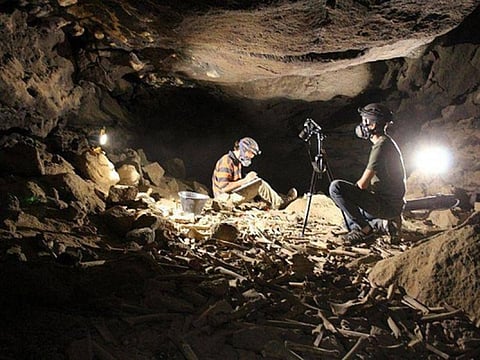Saudi Arabia: 7,000-year-old discoveries in Umm Jirsan cave
New discoveries include animal fossils and human skulls

Dubai: Saudi Arabia’s Heritage Commission on Monday announced 7,000-year-old discoveries in Umm Jirsan cave in the Harrat Khaybar in Medina, local media said.
The new discoveries include animal fossils and human skulls that were unearthed by a team of archaeologists and palaeontologists from the commission in cooperation with the Saudi Geological Survey, King Saud University and the German Max Planck Institute.
The lava tube cave of Umm Jirsan has both archaeological and palaeontological deposits that have been radiocarbon dated to multiple periods over 7,000 years.
The discoveries include tens of thousands of animal bones accumulated over time in the cave. The bone accumulations were mainly composed of striped hyena, horse, the wild ass and the domesticated donkey, as well as wild and domesticated camel, ibex, goat, and cattle.
Human skulls were also found, likely stolen from nearby graves in prehistory.
The bones are presently being examined for DNA, and studies are now underway to examine the history of pastoralism and animal domestication in the Arabian Peninsula.
The findings will soon be published in the international journal of Archaeological and Anthropological Sciences.
They form part of a series of discoveries made by the commission recently, which emphasises that the Arabian Peninsula was home to humans since thousands of years ago, as well as to many domesticated and wild animals living and breeding throughout the years.
Sign up for the Daily Briefing
Get the latest news and updates straight to your inbox






